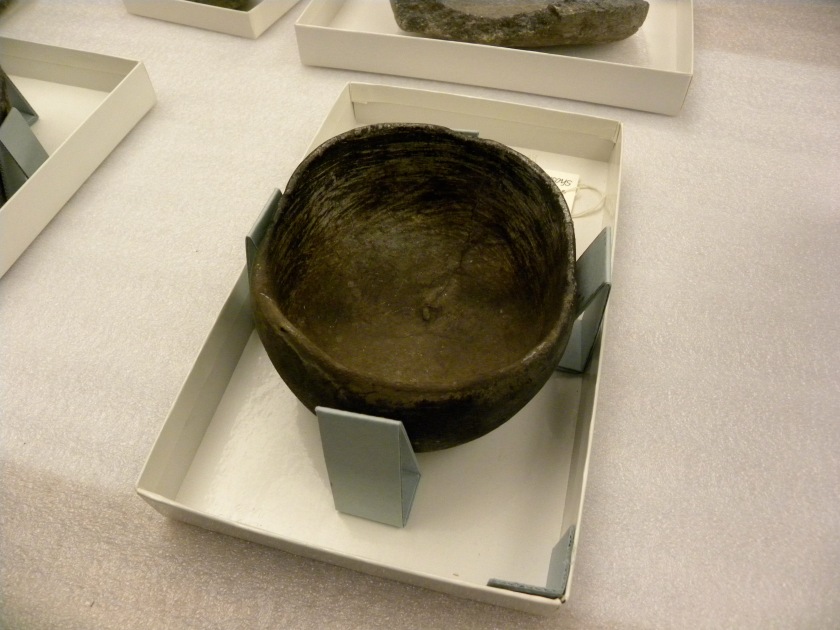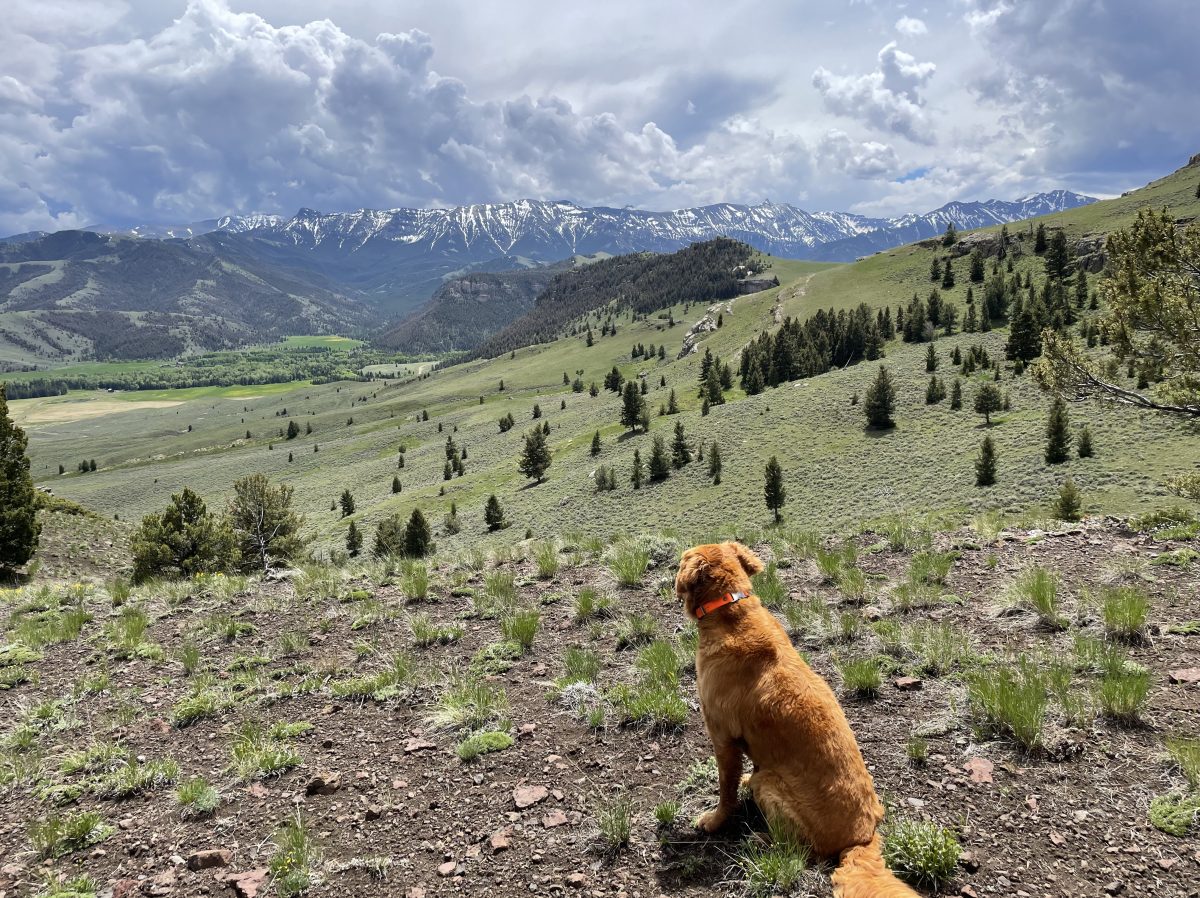I’ve been thinking about sheep and the peoples whose diet centered around them.
For quite some time, I”ve wanted to make an authentic Sheep Eater soup with a steatite bowl . Since I knew I wouldn’t be able to buy one, the only solution was to make one myself. Steatite is another word for soapstone, and the Sheep Eater Indians would quarry the stone and make bowls from them. Few of these bowls have been uncovered , probably because they broke over time. It appears they were passed down through the women, and possibly made by women as well. The men might have quarried and shaped the starting blocks.
The bowls, being heavy, were left at campsites, stashed for use when the peoples came back to the area. Most of the sites seem to be very high up, above 3000 meters. That is because these quarries are located high in the mountains. The bowls were carved right close to the quarries, which makes sense considering how heavy the rock is.
Soapstone, or steatite, bowls were used for cooking Sheep Eater stews consisting of sheep, bulbs and forbs. The bowls could be placed right in the hot coals. Once removed from the fire, the bowls stayed hot for a long time. One of the most difficult items for native peoples in any culture to obtain were containers. Containers were prized possessions, whether they were constructed of fiber, pine needles, gourd or rock. I’m sure that is why these bowls were passed down generation to generation.

Last year I set about trying to find a quarry. I knew there was one in Dillion MT. Since I was on my way to California for December, I thought I could find one there. California has several soapstone or Talc quarries but none of them were operating. I found a woman in Northern California who imported various stones for carving. She sold me a block of Brazilian soapstone, warning me that a lot of soapstone has asbestos in it and hers didn’t.
In geology language, rocks are graded on a scale of 1-10 for their hardness qualities, with soapstone being a 1 and diamond a 10. Since I thought all soapstone was equal, I began work on this block of brazilian stone. After several months, lots of drill bits, dremel bits, chisels, etc., I had made little progress. Apparently soapstone itself can have a variety of hardnesses. This brazilian stone was awfully hard, and didn’t have the ‘soapy’ consistency that is associated with soapstone. Complaining about my trials to a local friend, he immediately made a few calls and found me an original Wyoming piece of soapstone, quarried naturally from a secret spot out of Tensleep in the Big Horns. The block he gave me had a strange shape, difficult to cut a piece out of for a bowl, but I managed.

I’d seen a video where Richard Adams said it took about 30 hours to make a finished bowl. With the Brazilian stone, there was no way I was going to make a bowl in that time. I’d already invested more than that and hadn’t come far. So I wasn’t sure what to expect when I began working on the Wyoming block. But the going was easy, and in about twenty hours I had a decent bowl that I could call finished enough to cook in.


Here is a photo from the Park achives outside of Gardiner (worth making an appointment to see the new building) of what Adams calls a pre-form, or an unfinished bowl.


Yesterday, after working on my bowl for several hours, I took a hike up nearby Margarite draw. Last year I found a cougar den up there and I wanted to see if there had been any occupation this year. As I hiked higher and higher through the trees, I spotted a low saddle and headed for it. At the ridgeline the view of the Absarokas was breathtaking.  I saw a few elk grazing down below, but I had a hunch if I glassed these rocky hills I might see some sheep. Sure enough, a group of ewes was farther along the ridgeline. With the wind in my face, I figured I might be able to sneak up on them and get some good photos. What little I know about bighorn sheep is that when spooked they always go higher. So in approaching a group, if one approaches from higher up, they rarely look up to spot you. I tried the tactic and sure enough, it worked fairly well.
I saw a few elk grazing down below, but I had a hunch if I glassed these rocky hills I might see some sheep. Sure enough, a group of ewes was farther along the ridgeline. With the wind in my face, I figured I might be able to sneak up on them and get some good photos. What little I know about bighorn sheep is that when spooked they always go higher. So in approaching a group, if one approaches from higher up, they rarely look up to spot you. I tried the tactic and sure enough, it worked fairly well.

At the end of my several hour hike, I ran into the herd again, now grazing on the other side of the hills.
Pretty soon I’ll try out my new bowl. The green-up is beginning and I saw some Pasque flowers. Soon there will be Spring Beauties to add to my soap along with other greens. A friend who shot a Bighorn sheep a while back will give me a bit of mutton to add so I can make an authentic Sheep Eater stew in my homemade steatite bowl.


Nice job on the bowl, must have been a great feeling to have done that.
Mutton…..had it many times in many forms, and it was all….well, um, edible. After a days hard work chasing the woollys, I’m sure it would be fine.
Sneak in a bay leaf and some garlic, don’t tell anybody.
LikeLike
I have been looking for a piece of soapstone for about a year now. to make a sheepeater style bowl. However I have only been able to find a piece of brazilian stone. And like you said it is hard to work. I was wondering if you know any places to get any?
LikeLike
Sorry, no. Like I said in the piece, I hunted around and only was lucky that a local’s father had found a hidden quarry in WY. The woman who sold me the brazilian stone told me that soapstone has asbestos in it (hers was an exception of course). I have no idea if that is true or not but real soapstone was very easy to work. Hers was not.
LikeLike
Okay I was wondering what type of tools can you use to carve the stone? Also how did the bowl work?
LikeLike
The true soapstone I did by hand with a chisel. The only power tool I used was a saws all to get the basic piece cut from a much larger block. Soapstone is really soft and easy to work with. The bowl works great. I hardened it with beeswax mixed with oil in a cooking fire. Actually, I think its way bigger than I need–holds 5 quarts. I want to make a small one this winter
LikeLike
How many hours did it take to get the bowl ready to be cooked in? And also the steatite bowls that were found what was the size?
LikeLike
Many hours from a block to a bowl. And really I have no idea about sizes. The photos in this blog post of actual bowls were taken at the Yellowstone museum in the vault on a special tour. Those are the only complete ones I’ve ever seen. Use your imagination when making one.
LikeLike